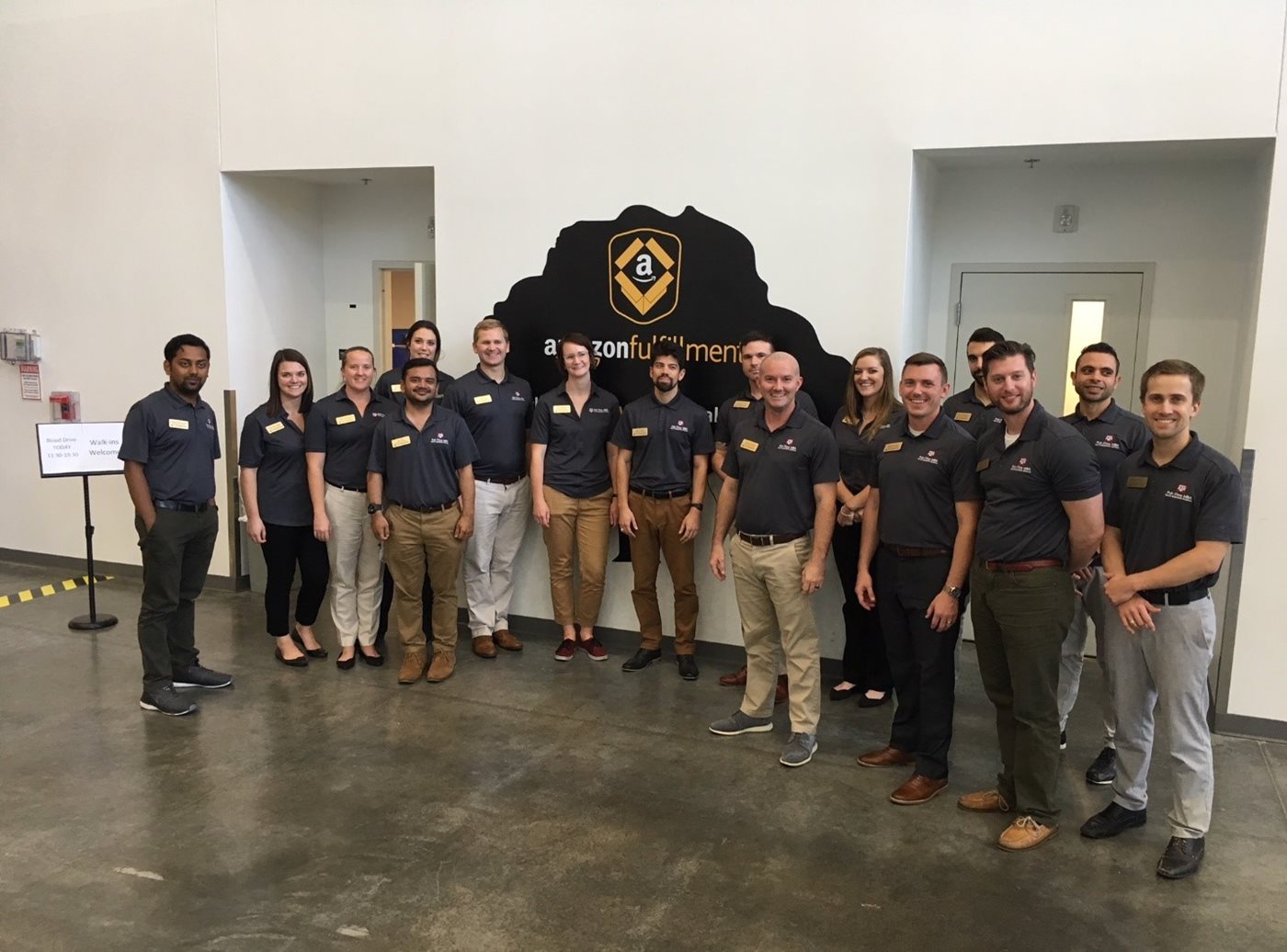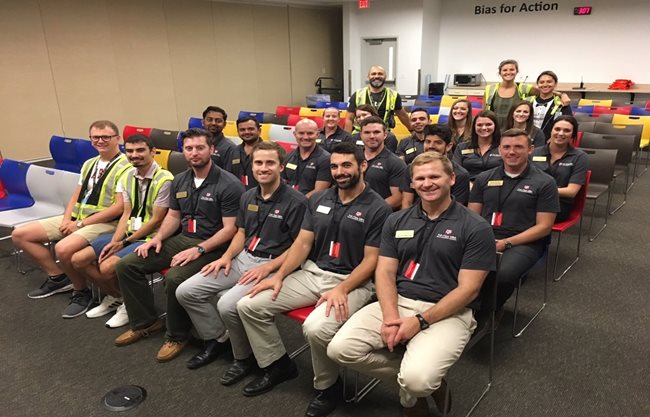February 2019

As we moved in, we were escorted to a visitor’s hall where we were given safety briefing. Subsequently, we were divided into two groups, before starting the tour of the technological marvel. We first visited the inbound section of the facility. This is the area where the fulfilment centre receives product boxes from the vendors. The quality assurance team does a primary check for any defects. The boxes are then placed on a conveyor belt and then retrieved by workers known as water spiders. Water spiders stack up boxes in a trolley and wrap it up using a plastic.
The trolleys are then moved to the stowing section, where workers open the boxes, pull out the item, scan it, do quality checks and send it for storage shelfs known as bins. The bins are nothing but robots. Giant wardrobe like robots move at an astonishing pace to ensure that workers don’t have to move with those heavy loads. All products are stored in bins randomly so that each product is equally and quickly accessible when ordered. This integration of robotics, conveyors, and assembly line produces an incredibly well woven network of automation and human interaction.
When a you order a product, the bin that contains the requisite product moves and goes near the shipping personnel who simply pulls out the product out of the bin and makes it ready for shipping in the outbound section.
Amazon tries every bit to ensure that its employees don’t have to move and face physical exertion. It makes its Human Resource department to stay on the floor and not inside closed-door cubicles. Most routine HR tasks are done through automated computers. Employees can easily meet HR personnel without any check in requirement. It has kept medical and personal protective equipment dispensers, offering unlimited supply of basic medicines and PPE to its employees. All the managers are motivated to be on the floor attending associates. There is no strict dress code and most people can be seen wearing casual tees along with shorts or jeans.
However, the most intriguing culture of Amazon is to see how it breaks down large employee groups into small teams of 3-4 people. They nurture them through training, variety, and competition. Regularly team competitions are launched and winners are rewarded. This promotes a fast-paced competitive environment that blends with Amazon’s motto of customer satisfaction.
In every section of the fulfilment centre, Amazon’s three core priorities are clearly visible – Safety, Quality, and Productivity. The company promotes and motivates everyone to give useful feedback. It has kept several white boards and resources to collect prompt feedback. Amazon’s Operation Managers keep moving across the Fulfilment centre entire day to monitor and coordinate teams. Although most workers don’t have to move or experience physical exertion, Operations manager have to be swift and agile to ensure all teams function smoothly.
Overall, we had one of the best experiences in the MBA program. If you ever get an opportunity to witness the giant factory that ships every tiny piece of item to your house, do not miss out!
